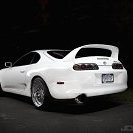R34 Gt-T Vacuum Lines
Announcements
-
Similar Content
-
Latest Posts
-
The rain is the best time to push to the edge of the grip limit. Water lubrication reduces the consumption of rubber without reducing the fun. I take pleasure in driving around the outside of numpties in Audis, WRXs, BRZs, etc, because they get all worried in the wet. They warm up faster than the engine oil does.
-
By Dose Pipe Sutututu · Posted
When they're dead cold, and in the wet, they're not very fun. RE003 are alright, they do harden very quickly and turn into literally $50 Pace tyres. -
Yeah, I thought that Reedy's video was quite good because he compared old and new (as in, well used and quite new) AD09s, with what is generally considered to be the fast Yokohama in this category (ie, sporty road/track tyres) and a tyre that people might be able to use to extend the comparo out into the space of more expensive European tyres, being the Cup 2. No-one would ever agree that the Cup 2 is a poor tyre - many would suggest that it is close to the very top of the category. And, for them all to come out so close to each other, and for the cheaper tyre in the test to do so well against the others, in some cases being even faster, shows that (good, non-linglong) tyres are reaching a plateau in terms of how good they can get, and they're all sitting on that same plateau. Anyway, on the AD08R, AD09, RS4 that I've had on the car in recent years, I've never had a problem in the cold and wet. SA gets down to 0-10°C in winter. Not so often, but it was only 4°C when I got in the car this morning. Once the tyres are warm (ie, after about 2km), you can start to lay into them. I've never aquaplaned or suffered serious off-corner understeer or anything like that in the wet, that I would not have expected to happen with a more normal tyre. I had some RE003s, and they were shit in the dry, shit in the wet, shit everywhere. I would rate the RS4 and AD0x as being more trustworthy in the wet, once the rubber is warm. Bridgestone should be ashamed of the RE003.
-
This is why I gave the disclaimer about how I drive in the wet which I feel is pretty important. I have heard people think RS4's are horrible in the rain, but I have this feeling they must be driving (or attempting to drive) anywhere close to the grip limit. I legitimately drive at the speed limit/below speed the limit 100% of the time in the rain. More than happy to just commute along at 50kmh behind a train of cars in 5th gear etc. I do agree with you with regards to the temp and the 'quality' of the tyre Dose. Most UHP tyres aren't even up to temperature on the road anyway, even when going mad initial D canyon carving. It would be interesting to see a not-up-to-temp UHP tyre compared against a mere... normal...HP tyre at these temperatures. I don't think you're (or me in this case) is actually picking up grip with an RS4/AD09 on the road relative to something like a RE003 because the RS4/AD09 is not up to temp and the RE003 is closer to it's optimal operating window.
-
By Dose Pipe Sutututu · Posted
Either the bearing has been installed backwards OR the gearbox input shaft bearing is loosey goosey. When in doubt, just put in a Samsonas in.
-









Recommended Posts
Create an account or sign in to comment
You need to be a member in order to leave a comment
Create an account
Sign up for a new account in our community. It's easy!
Register a new accountSign in
Already have an account? Sign in here.
Sign In Now